Bodybuilding
How Can Steroids Help Build Muscles
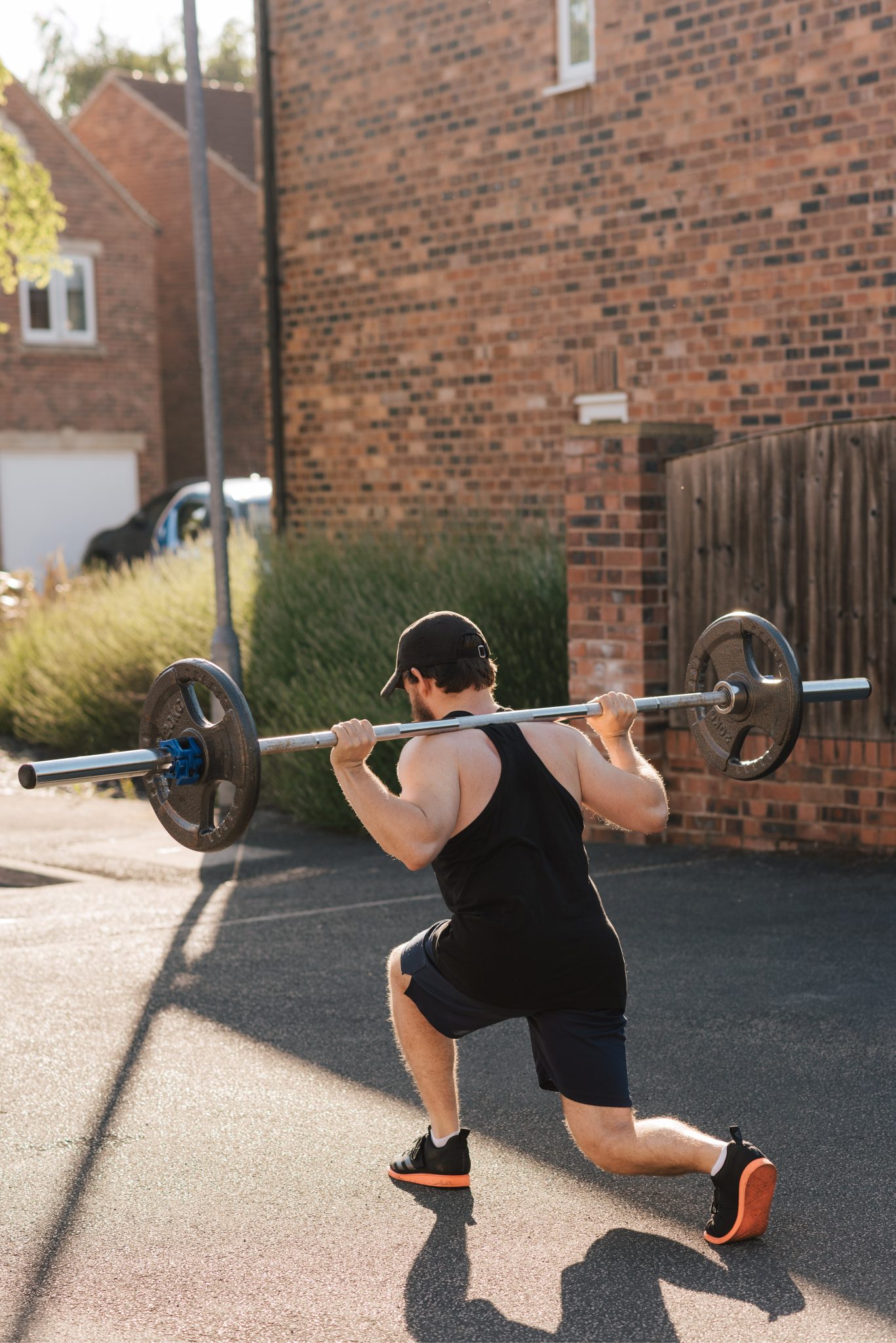
You have heard many stories about how steroids can help grow muscles in athletes and bodybuilders. Since it is a drug that speeds up the bodybuilding process and improves performance, you must know that steroids help build muscle but can be hazardous to your health as an athlete.
Types of Steroids
Two types of Steroids help build muscle. First, Anabolic steroids help increase muscle tissue so that you can grow those muscles fast, and the catabolic works the other way around. Athletes and bodybuilders commonly use anabolic steroids.
It kindles the body to produce more protein to help build those muscles. A steroid is a drug used to build muscles, but before going any further, steroids help build strength and act as hormones when inside the human body, and it is a chemically made testosterone.
In short, steroids can be used as hormone replacement if you have hormonal deficiencies. However, it sends signals to the human brain. It can stop the natural production of natural hormones and can result in an increase in testosterone, which can hurt men and women.
Anabolic Steroids Online
Legal or not, many people look for steroids online or anywhere they can buy them. We cannot deny that using such performance-enhancement drugs can give you positive results because they can help grow muscles faster than those doing bodybuilding naturally. But you need to remember that this drug can give you a lot of adverse side effects.
Must Read: Is buying injectable steroids online safe?
Some of these side effects are:
- Testicles grow bigger and faster than hair growth.
- It can lead to baldness, and breast development for males can result from prolonged usage.
- Liver Failure and jaundice
- It can sometimes lead to depression and mood swings.
Using steroids can significantly affect your sex life because it can cause erectile dysfunction, and I am sure you would not want that, right? As you can see, steroids have many side effects compared to their benefits.
Yes, we cannot deny that it can help your performance as an athlete or a bodybuilder and grow and develop those muscles fast, but it can destroy your life with just one wrong decision.
Steroids help build muscles across the board. For instance, the drugs can help female bodybuilders and athletes grow their muscles fast and improve their performance. But prolonged use can also result in physical problems like:
- Develop more male hormones and look like a man.
- Problems in the reproductive system and infertility.
- It can significantly affect the menstrual cycle.
Steroids Help Build Muscles for Competitions
If you happen to see female bodybuilders in a bodybuilding competition, some have hair on their face and chest, and others have a voice like a man. That is not sexy anymore. If you consult a medical practitioner formally, there are positive ways to decrease or prevent these side effects.
You can also learn more about healthy training and workout routines through the Internet because there is a lot of fitness center online that provides good bodybuilding training and muscle growth without using drugs such as steroids.
More Ways to Build Muscle Mass
Building muscle mass effectively requires a combination of proper nutrition, consistent resistance training, adequate rest, and smart supplementation. Here are some very good ways to build muscle mass:
-
Progressive Resistance Training:
- Start with compound exercises like squats, deadlifts, bench presses, and overhead presses. These engage multiple muscle groups and stimulate more muscle growth.
- Gradually increase the weight or resistance you lift over time. This progressive overload is essential for muscle growth.
- Focus on free weights and machines to target different muscle groups and avoid plateaus.
-
Balanced Nutrition:
- Consume a calorie surplus, which means you need to eat more calories than you burn to support muscle growth.
- Prioritize protein intake, aiming for 1.6 to 2.2 grams of protein per kilogram of body weight per day.
- Include carbohydrates for energy and fats for overall health.
- Eat various nutrient-dense foods, including lean meats, fish, dairy, whole grains, fruits, and vegetables.
-
Meal Timing:
- Spread your protein intake evenly throughout the day to optimize muscle protein synthesis.
- Consider pre-and post-workout nutrition to provide your body with the necessary nutrients around your training sessions.
-
Adequate Hydration:
- Staying hydrated is crucial for muscle function and overall health. Dehydration can impair performance and muscle growth.
-
Proper Rest and Recovery:
- Aim for 7-9 hours of quality sleep each night to allow your muscles to recover and grow.
- Include rest days in your workout routine to prevent overtraining and reduce the risk of injury.
-
Supplementation (optional):
- Consider supplements like creatine, branched-chain amino acids (BCAAs), and whey protein if you have trouble meeting your nutritional needs through whole foods alone.
-
Consistency:
- Building muscle takes time and consistency. Stick to your workout routine and nutrition plan for the long term.
-
Form and Technique:
- Maintain proper form and technique during exercises to minimize the risk of injury and ensure you're targeting the right muscle groups.
-
Variation:
- Change your workout routine every few weeks to prevent adaptation and stimulate muscle growth. This can involve altering exercises, sets, reps, and rest periods.
-
Tracking Progress:
- Keep a workout log to track your progress and make necessary adjustments to your routine.
- Monitor changes in your strength, body composition, and muscle measurements.
-
Seek Professional Guidance:
- Consider working with a certified personal trainer or fitness coach who can tailor a program to your specific goals and provide guidance on proper form and technique.
Remember that building muscle is a gradual process, and results may not be immediate. Be patient, stay consistent, and adjust your plan to continue progressing toward your muscle-building goals. Additionally, it's always a good idea to consult with a healthcare professional before starting a new exercise or nutrition program, especially if you have any underlying medical conditions.
Best Supplements for Lean Muscle
While getting essential nutrients from whole foods should be your primary focus for building strong muscles, some supplements can complement your diet and help support your muscle-building goals. Here are some of the best food supplements for muscle growth:
-
Protein Powder (Whey, Casein, or Plant-Based):
- Protein is crucial for muscle repair and growth. Protein powders are convenient and help you meet your daily protein intake goals. Whey protein is a fast-digesting option, while casein provides a slow release of amino acids. Plant-based options like pea, hemp, or rice protein suit vegetarians and vegans.
-
Creatine:
- Creatine is one of the most researched and effective supplements for increasing muscle mass and strength. It helps improve high-intensity, short-duration activities like weightlifting. Creatine monohydrate is a widely used and cost-effective option.
-
Branched-Chain Amino Acids (BCAAs):
- BCAAs (leucine, isoleucine, and valine) can help reduce muscle soreness, enhance recovery, and stimulate muscle protein synthesis. They are often used as intra-workout or post-workout supplements.
-
Beta-Alanine:
- Beta-alanine can increase muscle endurance by buffering lactic acid buildup during high-intensity exercise. It's particularly useful for activities that involve repetitive bursts of energy, like sprinting and lifting weights.
-
L-Glutamine:
- Glutamine is an amino acid that plays a role in muscle recovery. While it's not always necessary to supplement with glutamine if you have a well-balanced diet, some athletes find it beneficial, especially during intense training.
-
Omega-3 Fatty Acids (Fish Oil):
- Omega-3 fatty acids have anti-inflammatory properties and can support muscle recovery. They also promote overall health and joint function.
-
Vitamin D:
- Vitamin D is essential for muscle function and overall health. Many people have inadequate vitamin D levels, so supplementation may be necessary, especially with limited sun exposure.
-
Multivitamins and Minerals:
- A high-quality multivitamin can help you meet your daily micronutrient needs, which are essential for muscle function and overall health.
-
ZMA (Zinc, Magnesium, and Vitamin B6):
- ZMA supplements are often taken before bedtime to support muscle recovery, improve sleep quality, and maintain proper hormone levels.
-
Caffeine (Pre-workout):
- Caffeine can increase alertness, energy levels, and endurance during workouts. It may also help you push through challenging training sessions.
-
HMB (Beta-Hydroxy Beta-Methylbutyrate):
- HMB is a metabolite of leucine and can help reduce muscle protein breakdown, making it beneficial for muscle preservation during periods of calorie restriction or intense training.
It's important to note that supplements should complement a well-rounded diet, not replace it. Always consult with a healthcare professional or registered dietitian before adding supplements to your routine, as individual needs vary, and some supplements may interact with medications or have side effects. Additionally, prioritize a balanced diet rich in whole foods to provide your body with the foundation for muscle growth and overall health.
Click on the Banner Below to get the Best Steroids Legally:-
Bodybuilding
2nd Edition of Natural Bodybuilding Competition Facts
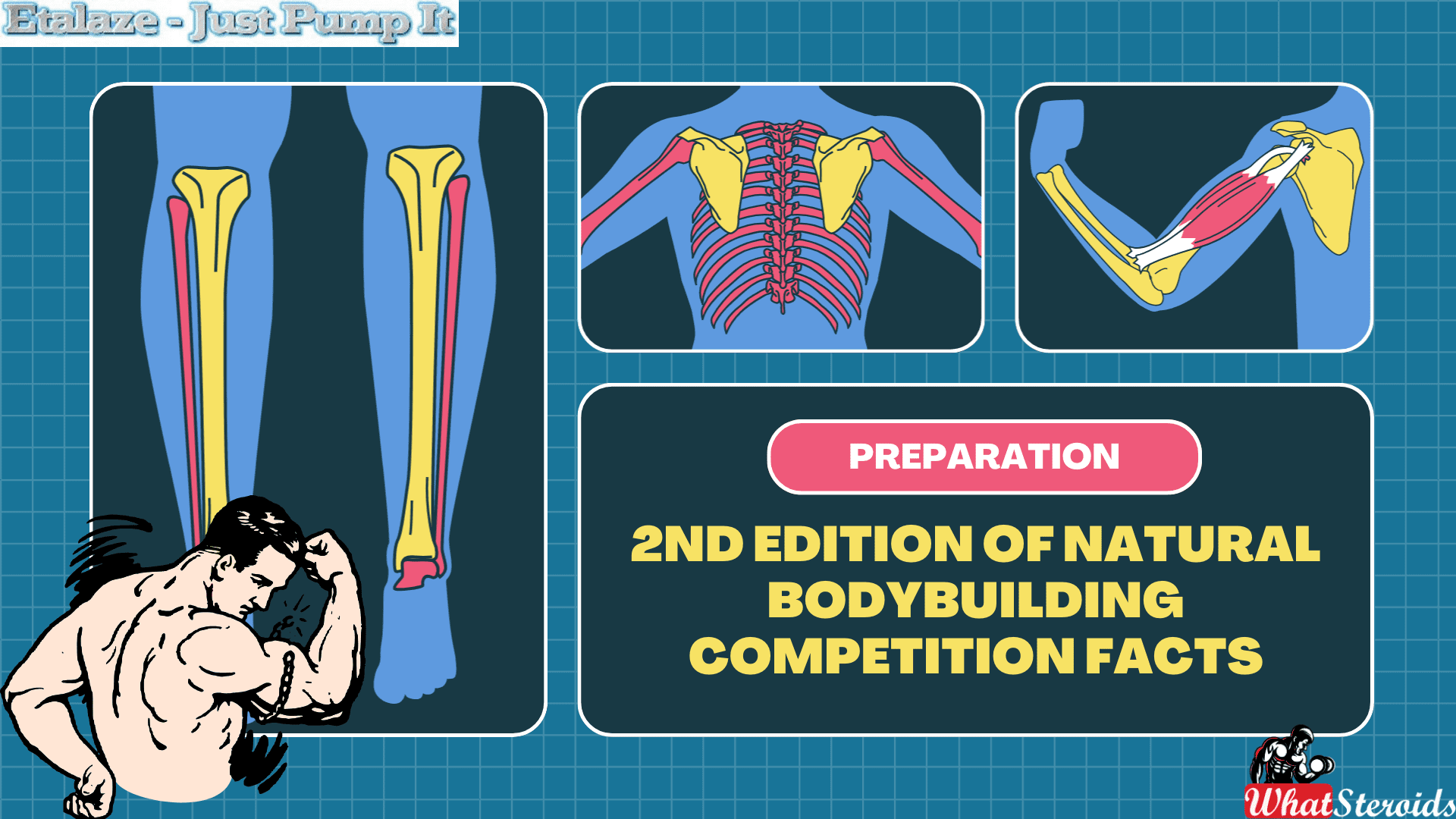
Natural bodybuilding competitions are designed to promote and celebrate athletes who build their physiques without the use of performance-enhancing drugs. These events emphasize fair play, health, and the natural development of muscle mass and definition.
The second edition of natural bodybuilding competitions has gained momentum globally, particularly focusing on drug-free athletes. These competitions are hosted by various organizations like the INBA/PNBA (International Natural Bodybuilding Association/Professional Natural Bodybuilding Association) and OCB (Organization of Competitive Bodybuilders).
In 2024, several notable events have been planned, including the INBA Natural Universe and INBA World Cup, both of which emphasize natural bodybuilding through rigorous drug testing policies. These events aim to showcase competitors who adhere to strict drug-free protocols, and winners often earn pro cards allowing them to compete in higher-level professional competitions.
These competitions focus on categories like men's bodybuilding, classic physique, and women's figure and bikini, among others. Athletes undergo polygraph and urine tests to ensure compliance with natural bodybuilding standards. The winners often receive medals, trophies, or pro status
Bodybuilding
Primal Movements: Our Ultimate Guide for Maximum Results
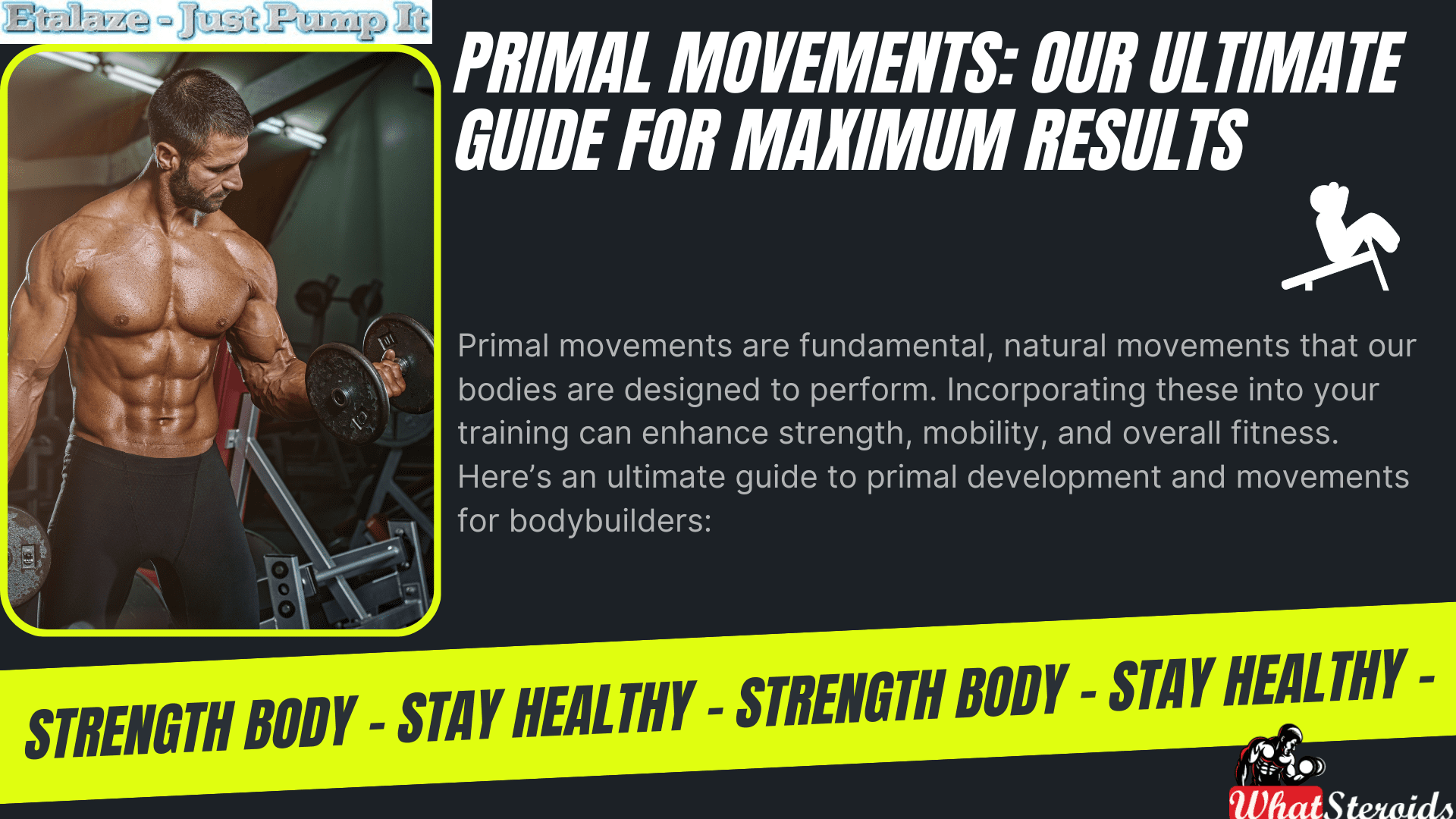
Primal movements are fundamental, natural movements that our bodies are designed to perform. Incorporating these into your training can enhance strength, mobility, and overall fitness. Here’s an ultimate guide to primal development and movements for bodybuilders:
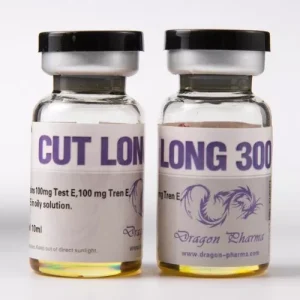 Buy Cut Long 300 by Dragon Pharma
Buy Cut Long 300 by Dragon Pharma
Understanding Primal Movements
Primal movements are basic, functional movements that mimic the natural actions humans have performed for thousands of years. These movements are essential for developing a strong, balanced, and resilient body. They can be categorized into seven primary patterns:
Related Article: How Much Do You Know About B-AET? A Fat Burner You’ve Been Missing
- Push
- Pull
- Squat
- Lunge
- Hinge
- Rotate
- Gait (Locomotion)
The Seven Primal Movement Patterns
Push
Description: Involves moving a weight or resistance away from your body.
Examples: Push-ups, bench press, overhead press.
Muscles Worked: Chest, shoulders, triceps.
Pull
Description: Involves drawing a weight or resistance towards your body.
Examples: Pull-ups, rows, bicep curls.
Muscles Worked: Back, biceps, forearms.
Squat
Description: A fundamental lower-body movement where you lower your hips from a standing position and then stand back up.
Examples: Bodyweight squats, barbell squats, goblet squats.
Muscles Worked: Quadriceps, hamstrings, glutes, calves.
Lunge
Description: A single-leg movement that involves stepping forward, backward, or to the side and lowering your hips.
Examples: Forward lunges, reverse lunges, lateral lunges.
Muscles Worked: Quadriceps, hamstrings, glutes, calves.
Hinge
Description: Involves bending at the hips while keeping a neutral spine.
Examples: Deadlifts, kettlebell swings, hip thrusts.
Muscles Worked: Hamstrings, glutes, lower back.
Rotate
Description: Involves twisting or rotating the torso.
Examples: Russian twists, woodchoppers, cable rotations.
Muscles Worked: Obliques, abdominals, lower back.
Gait (Locomotion)
Description: Involves movements that propel the body forward.
Examples: Walking, running, crawling, bear crawls.
Muscles Worked: Full body, with emphasis on legs and core.
Benefits of Primal Movements
Functional Strength: Primal movements enhance your ability to perform everyday tasks efficiently and safely.
Improved Mobility: These movements promote flexibility and range of motion, reducing the risk of injury.
Balanced Development: By working multiple muscle groups, primal movements ensure balanced muscle development.
Core Stability: Many primal movements engage the core, improving overall stability and strength.
Increased Caloric Burn: Compound movements like these burn more calories, aiding in fat loss and conditioning.
Incorporating Primal Movements into Your Training
Warm-Up: Start with dynamic stretches and light cardio to prepare your body.
Compound Exercises: Focus on compound exercises that incorporate multiple primal movements.
Progressive Overload: Gradually increase the weight or resistance to continue making gains.
Variety: Mix up your routine to prevent plateaus and keep your workouts interesting.
Recovery: Ensure adequate rest and recovery to allow your muscles to repair and grow.
Sample Primal Movement Workout
Warm-Up: 5-10 minutes of light cardio and dynamic stretching.
Workout:
Push: 3 sets of 10-12 reps of push-ups or bench press.
Pull: 3 sets of 10-12 reps of pull-ups or rows.
Squat: 3 sets of 10-12 reps of bodyweight or barbell squats.
Lunge: 3 sets of 10-12 reps per leg of forward or reverse lunges.
Hinge: 3 sets of 10-12 reps of deadlifts or kettlebell swings.
Rotate: 3 sets of 15-20 reps of Russian twists or cable rotations.
Gait: 3 sets of 30-60 seconds of bear crawls or sprints.
Cool-Down: 5-10 minutes of static stretching and deep breathing exercises.
1. Warm-Up and Mobility Drills
Start your workout with primal movement-based warm-ups to prepare your body. For example:
- Dynamic stretches: Incorporate lunges with a twist, leg swings, and arm circles.
- Mobility drills: Include exercises like hip circles, cat-cow stretches, and thoracic rotations.
2. Compound Exercises
Add primal movements as the core of your workout. Here’s how you can structure it:
- Push Day: Combine bench presses with push-ups.
- Pull Day: Mix pull-ups with rows.
- Leg Day: Integrate squats and lunges with deadlifts.
3. Supersets and Circuits
Create supersets or circuits that include primal movements:
- Superset Example: Pair squats with pull-ups or push-ups with lunges.
- Circuit Example: Rotate through exercises like kettlebell swings, bear crawls, and Russian twists with minimal rest.
4. Functional Training Days
Dedicate one or two days a week to functional training focused on primal movements:
Sample Functional Workout
-
- Warm-Up: 5 minutes of dynamic stretching.
- Circuit: 3 rounds of:
- 10 push-ups
- 10 pull-ups
- 15 squats
- 10 lunges per leg
- 15 kettlebell swings
- 20 Russian twists
- 30 seconds of bear crawls
- Cool-Down: 5 minutes of static stretching.
5. Active Recovery
Use primal movements on active recovery days to promote mobility and flexibility:
- Activities: Light yoga, walking, or gentle bodyweight exercises like lunges and squats.
6. Progressive Overload
Gradually increase the intensity of primal movements by adding weights or resistance bands:
- Example: Start with bodyweight squats, then progress to goblet squats, and eventually barbell squats.
7. Listen to Your Body
Pay attention to how your body responds to these movements and adjust accordingly:
- Modify: If a movement feels too challenging, modify it to suit your fitness level.
- Rest: Ensure you’re getting adequate rest and recovery to prevent overtraining.
Read More: Cellular Alchemy to Restore Testosterone Levels
Sample Weekly Routine for Primal Movements
Monday: Push Day
- Bench Press
- Push-Ups
- Overhead Press
Tuesday: Pull Day
- Pull-Ups
- Rows
- Bicep Curls
Wednesday: Leg Day
- Squats
- Lunges
- Deadlifts
Thursday: Functional Training
- Circuit of primal movements (as outlined above)
Friday: Active Recovery
- Light yoga or walking
Saturday: Full-Body Workout
- Combination of push, pull, squat, and hinge movements
Sunday: Rest Day
By incorporating these primal movements, you’ll enhance your functional strength, mobility, and overall fitness. If you have any specific goals or need further customization, feel free to ask! Happy training.
For optimal performance in primal movements before a bodybuilding competition, consider these supplements:
Pre-Workout Supplements: These can provide energy and enhance performance. Look for products containing creatine, nitric oxide stimulators, and caffeine.
Post-Workout Supplements: Essential for recovery, including protein powders, BCAAs (Branched-Chain Amino Acids), and multivitamins.
Fat Burners and Metabolizers: These can help in reducing body fat while maintaining muscle mass. Ingredients like green tea extract and L-carnitine are popular.
Adaptogens: Supplements like ashwagandha and rhodiola rosea can help manage stress and improve endurance.
Conlusion
Primal movements, which include squatting, lunging, hinging, twisting, walking, pushing, and pulling, benefit from a strong foundation of functional strength and mobility. Ensuring your body is well-nourished and recovered will help you perform these movements effectively.
Incorporating primal movements into your bodybuilding routine can lead to significant improvements in strength, mobility, and overall fitness. By focusing on these fundamental patterns, you can build a well-rounded, resilient body that performs well both in and out of the gym.
Bodybuilding
Are Nootropics a Better Option to AAS?
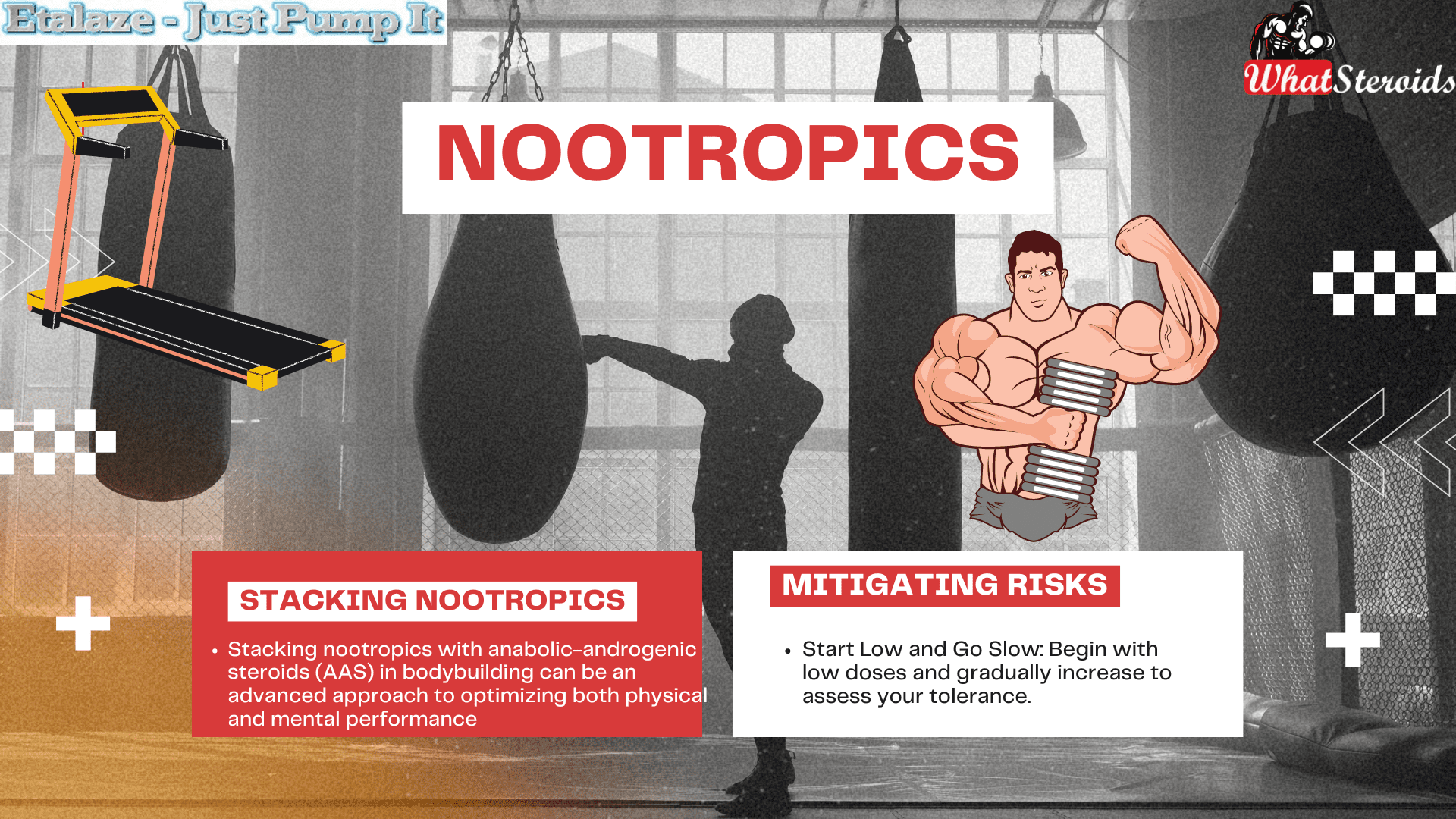
Nootropics in bodybuilding refer to supplements or substances that enhance cognitive functions such as focus, memory, motivation, and mental clarity. While traditional bodybuilding supplements focus on muscle growth, strength, and endurance, nootropics target the mental aspect of training. Improved focus and motivation can lead to better workouts, more consistent training, and ultimately better results.
Must Read: A New Caffeine? What You Need to Know about Teacrine
Here are some common nootropics used in bodybuilding:
Caffeine: Widely used for its stimulant effects, caffeine can boost energy, focus, and endurance during workouts.
L-Theanine: Often combined with caffeine, L-Theanine promotes relaxation without drowsiness, helping to balance out the jittery effects of caffeine.
Alpha-GPC: A source of choline that supports the production of acetylcholine, a neurotransmitter essential for cognitive function and muscle contraction.
Rhodiola Rosea: An adaptogen that helps reduce fatigue and improve mental resilience, making it useful for both physical and mental performance.
Bacopa Monnieri: Known for enhancing memory and reducing anxiety, Bacopa is popular for those who want to stay mentally sharp during intense training phases.
Lion’s Mane Mushroom: A natural nootropic that supports brain health, cognitive function, and reduces mental fatigue.
Phenylpiracetam: A racetam-class nootropic that is known for its stimulating effects and ability to enhance focus and mental energy, which can be beneficial during challenging workout sessions.
Stacking Nootropics With AAS
Stacking nootropics with anabolic-androgenic steroids (AAS) in bodybuilding can be an advanced approach to optimizing both physical and mental performance. Here’s a guide on how to combine these substances effectively:
Understanding the Purpose of the Stack
Combining nootropics with AAS aims to enhance not only muscle growth, strength, and recovery (which AAS focus on) but also mental aspects like focus, motivation, and mood (which nootropics address). This stack can help bodybuilders push through plateaus, manage training stress, and maintain peak performance.
Common Nootropics to Stack with AAS
Caffeine + L-Theanine: Enhances alertness and focus while reducing anxiety. Helps with energy and focus during intense workouts.
Alpha-GPC: Boosts acetylcholine levels, improving mental clarity and enhancing the mind-muscle connection.
Rhodiola Rosea: Mitigates stress and fatigue, which is crucial during heavy steroid cycles where physical and mental stress is higher.
Lion’s Mane Mushroom: Promotes cognitive health and neuroprotection, helping you stay sharp during longer cycles.
Bacopa Monnieri: Reduces anxiety and improves memory, supporting better recovery and relaxation outside the gym.
Tips for Stacking
Start with Lower Doses: If you’re new to either nootropics or AAS, start with minimal doses and gradually adjust based on how your body responds. Stacking too much too soon increases the risk of side effects.
Cycle Both Nootropics and AAS: Just like AAS, it’s wise to cycle nootropics to avoid tolerance buildup. For instance, you might use nootropics for 6-8 weeks and then take a break, aligning this cycle with your AAS cycle.
Prioritize Liver and Organ Health: Both nootropics and AAS can stress the liver and other organs. Incorporate liver support supplements like milk thistle, NAC (N-Acetyl Cysteine), and TUDCA (Tauroursodeoxycholic Acid).
Stay Hydrated and Maintain Proper Nutrition: Both nootropics and AAS can increase metabolic demands. Staying hydrated and following a nutrient-rich diet ensures better overall performance and health.
Related Article: Protein Powder Supplement Comparison – Which Type To Choose?
Sample Stack for a Cutting Phase
Nootropics: Caffeine + L-Theanine, Alpha-GPC, Rhodiola Rosea
AAS: Testosterone Propionate, Trenbolone Acetate, Anavar (Oxandrolone)
Support Supplements: Liver support (NAC, TUDCA), multivitamins, omega-3s
This stack can help maintain muscle mass, enhance focus and energy during workouts, and support mental well-being during calorie deficits.
Sample Stack for a Bulking Phase
Nootropics: Lion’s Mane, Bacopa Monnieri, Alpha-GPC
AAS: Testosterone Enanthate, Deca-Durabolin (Nandrolone Decanoate), Dianabol (Methandrostenolone)
Support Supplements: Joint support (collagen, glucosamine), digestive enzymes, liver support
This combination can boost cognitive function, improve recovery, and support the intense training needed for mass-building phases.
Stacking nootropics with AAS can offer significant benefits for bodybuilders aiming for peak mental and physical performance. However, it’s critical to approach this strategy with caution, considering the possible interactions and side effects. Always consult a healthcare professional before starting any stack, especially one involving AAS and nootropics.
Possible Side Effects Associated With Nootropics
While nootropics can enhance cognitive function, focus, and motivation, they can also cause side effects, especially when used in high doses or stacked with other supplements like anabolic-androgenic steroids (AAS). Some common side effects associated with nootropics in bodybuilding include:
1. Insomnia and Sleep Disturbances
Many nootropics, especially stimulants like caffeine, can lead to difficulties falling asleep or maintaining restful sleep. This is particularly problematic if taken late in the day, as sleep is critical for recovery and muscle growth.
2. Anxiety and Nervousness
Nootropics that stimulate the central nervous system (e.g., caffeine, phenylpiracetam) can increase anxiety, jitteriness, or nervousness, especially when combined with other stimulants or during periods of high stress.
3. Headaches
Certain nootropics, particularly racetams (like piracetam or aniracetam), can deplete choline levels in the brain, leading to headaches. Supplementing with choline sources like Alpha-GPC can help mitigate this side effect.
4. Gastrointestinal Issues
Some nootropics may cause nausea, stomach cramps, or diarrhea, especially if taken on an empty stomach or in high doses.
5. Mood Swings and Irritability
Nootropics that affect neurotransmitter levels (like dopamine or serotonin) can lead to mood swings, irritability, or even depressive symptoms if used improperly or if taken in combination with AAS, which can already impact mood.
6. Tolerance and Dependence
Frequent use of certain nootropics, particularly stimulants, can lead to tolerance, where increasing doses are needed to achieve the same effect. This can also result in dependence, where users feel they need the nootropic to function optimally.
7. Overstimulation
High doses or the wrong combination of nootropics can cause overstimulation, leading to symptoms like rapid heart rate, high blood pressure, and excessive sweating. This can be particularly risky during intense workouts.
8. Cognitive Fatigue or Brain Fog
In some cases, nootropics intended to boost focus or clarity can backfire, leading to cognitive fatigue or brain fog. This can happen due to overloading neurotransmitter pathways or poor dosing strategies.
9. Interactions with Other Supplements or Medications
Nootropics may interact with other bodybuilding supplements, medications, or AAS, leading to unexpected side effects. For example, combining stimulants like caffeine with pre-workouts or fat burners can amplify side effects like anxiety or heart palpitations.
10. Long-Term Safety Concerns
The long-term effects of many nootropics are not well-studied, especially when taken in high doses or combined with other substances. Chronic use could potentially lead to neurological imbalances or organ stress over time.
Mitigating Risks
Start Low and Go Slow: Begin with low doses and gradually increase to assess your tolerance.
Cycle Usage: Avoid using the same nootropics daily to prevent tolerance and dependence.
Stay Hydrated and Eat Well: Proper hydration and nutrition can reduce the risk of gastrointestinal and cognitive issues.
Monitor Your Response: Keep track of how you feel when taking nootropics and adjust accordingly if you notice negative side effects.
Consult a Professional: If you’re stacking nootropics with other substances like AAS, it’s essential to get medical advice to avoid harmful interactions.
While nootropics can offer cognitive and motivational benefits in bodybuilding, responsible use and monitoring are key to minimizing side effects.
Take Away
To conclude, nootropics can help bodybuilders maintain high levels of mental energy, motivation, and focus during training, which is essential for pushing through tough workouts and staying consistent with your fitness goals. However, as with any supplement, it’s important to research and consider potential side effects and interactions.
Don't Miss: Horse Chestnut and Other Supplements to Get Rid of Water Retention
-

 Steroids2 years ago
Steroids2 years agoVOX Testing: Why Bodybuilders Must Have It Tested Regularly
-

 Steroids1 year ago
Steroids1 year agoShavers and Other Body Grooming Equipment for Bodybuilders In 2023
-

 Steroids1 year ago
Steroids1 year agoChatGPT and Other Avenues to Find Great Bodybuilding Coaches
-

 Steroids1 year ago
Steroids1 year agoBest Oil Recommendations Before Competition for Subtle Shimmer
-

 Steroids1 year ago
Steroids1 year agoPowerlifting Vs Power Building: Find Out the Big Difference and When to Shift Between the Two
-

 Nutrition1 year ago
Nutrition1 year agoEverything Nutritional Food: What’s Too Much Or Too Little
-

 Beginners1 year ago
Beginners1 year agoTren Cycle for Beginners
-

 Anabolic Steroids12 months ago
Anabolic Steroids12 months agoLegality of Anabolic Steroids In Latin America
-

 Bodybuilding Products8 months ago
Bodybuilding Products8 months agoTelmisartan In Bodybuilding: An Expert’s Advice
-

 Bodybuilding1 year ago
Bodybuilding1 year agoCompetition Prep Cycle for Pro Bodybuilders
-

 Bodybuilding9 months ago
Bodybuilding9 months agoList of FDA-Approved Peptides
-

 Anabolic Steroids6 months ago
Anabolic Steroids6 months agoHow Much Do You Know About B-AET? A Fat Burner You’ve Been Missing
-

 Bodybuilding1 year ago
Bodybuilding1 year agoChia Seeds in A Bodybuilder’s Diet: An Expert’s Advice
-

 Steroids9 months ago
Steroids9 months agoTrenbolone: Why it Remains A Beast In the Market
-

 Anabolic Steroids1 year ago
Anabolic Steroids1 year agoNatural Steroids for Bodybuilding
-

 Anabolic Steroids11 months ago
Anabolic Steroids11 months agoStart The New Year Strong With These Tips
-

 Beginners1 year ago
Beginners1 year agoCalisthenics: Secret to Building A Better Upper and Middle Body
-

 Bodybuilding11 months ago
Bodybuilding11 months agoUnique Things That Have Redefined Mr Olympia Over The Years
-
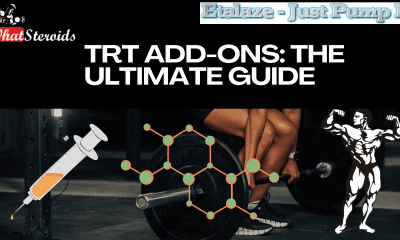
 Bodybuilding Products6 months ago
Bodybuilding Products6 months agoTRT Add-ons: The Ultimate Guide
-

 Steroids6 months ago
Steroids6 months agoMajor Bodybuilding Peptides Explained
-

 Bodybuilding8 months ago
Bodybuilding8 months agoHow Much Is Too Much Cardio? Understanding Heart Rate Zones
-

 Product Reviews6 months ago
Product Reviews6 months agoTop Vitamins for Skin Health
-
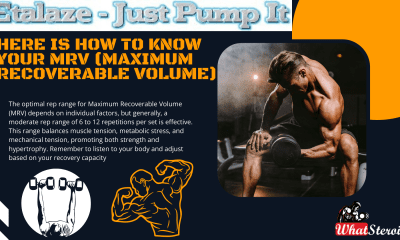
 Bodybuilding5 months ago
Bodybuilding5 months agoHere Is How To know Your MRV (Maximum Recoverable Volume)
-

 Bodybuilding8 months ago
Bodybuilding8 months agoThe Importance of Scaptions in Female Athletes
-
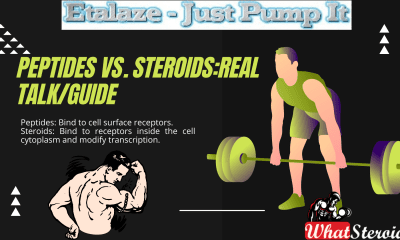
 Anabolic Steroids7 months ago
Anabolic Steroids7 months agoPeptides Vs. Steroids:Real Talk/Guide


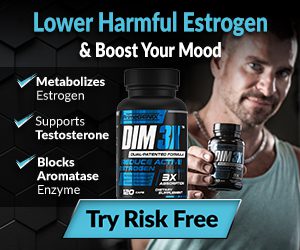



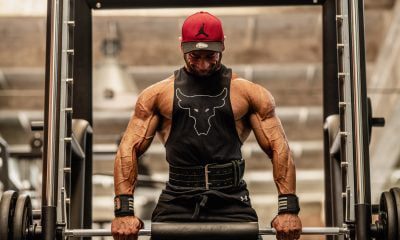

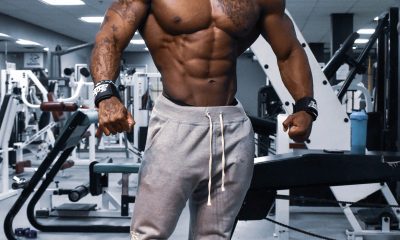



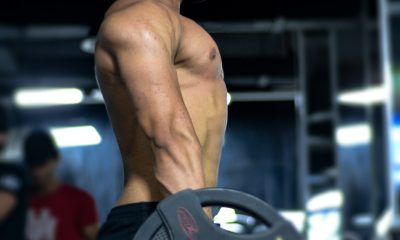



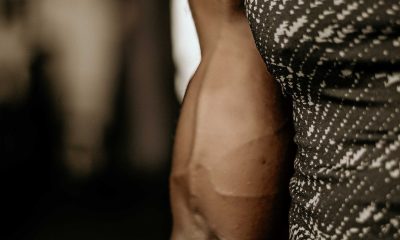


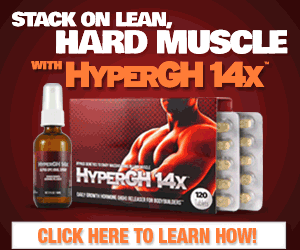
 Click here to buy 1-Test Cyp/DHB 100 by Dragon Pharma
Click here to buy 1-Test Cyp/DHB 100 by Dragon Pharma













